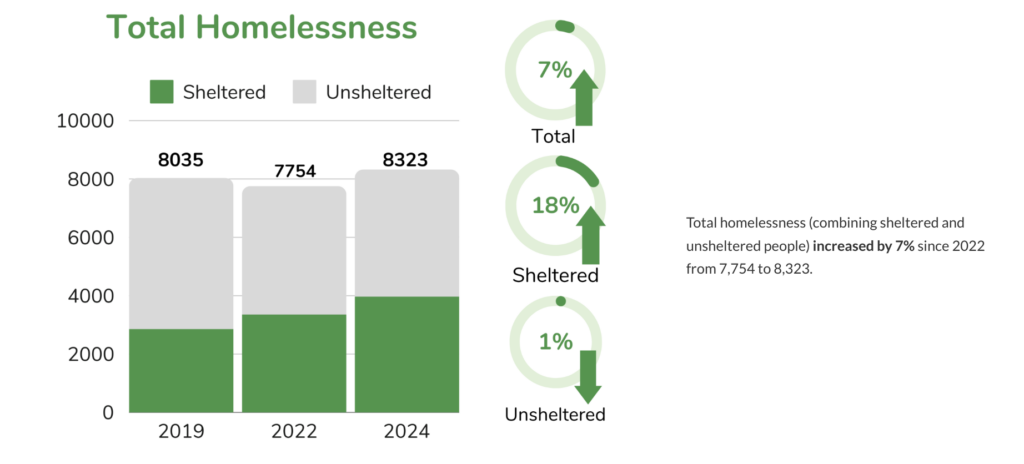a statement from the Coalition on Homelessness

San Francisco — Despite a marked improvement in housing placements, underlying socioeconomic disparities combined with a lack of significant federal and state investment in affordable housing have driven homeless rates up 7% in San Francisco. In particular, the Point in Time Count showed a 94% increase in family homelessness, and a 90% increase in vehicularly housed. Increased shelter and housing availability has led to a 13% decrease in street homelessness.
According to Solinna Ven, Organizing Director of the Coalition on Homelessness, “This count reflects a harsh reality. Due to November 2018 Prop C, the city is housing more unhoused people than ever, but these investments are not keeping up with the systemic reality of rising rents and stagnant income.” November 2018 Prop C, leveraging state and federal funding for homelessness, has meant the city has been able to place an average of 49 households into housing each week this fiscal year, compared to only 15 per week before Prop C funds were available during fiscal year 2017/2018. “This is what has led to a 13% decrease in the street count, not enforcement or sweeps. The criminalization of homelessness does not and has never decreased homelessness but instead has exacerbated homelessness and increased morbidity.”
The city cannot solely rely on Prop C funds to address the major underlying systemic inequities growing homelessness represents across the country, and more federal, state and local investments are needed to prevent homelessness through short, medium, and long-term rental assistance paired with legal eviction defense services, as well as restoring our nation’s commitment to ensuring the public stock of extremely low-income housing is commiserate with need.
According to Yessica Hernandez, Housing Justice Organizer with the Coalition on Homelessness, “The city leadership has a legacy of neglecting homeless families and their children and has failed to expand badly needed housing, jobs, and safe parking sites. We only have one small safe parking site in the whole city. The city is about to evict dozens of families and individuals living in their RV’s near SFSU who have nowhere to go. This will only make the problem worse.”
Only 9% of homeless funding system-wide goes towards family homelessness. Part of this failed investment has been driven by chronic undercounting of the family population. There are 442 families currently on the shelter and hotel waiting lists. A recent report described the chronic undercount of families and the steps needed to correct this. (Voices of the Unseen: A Real Count for Homeless Families). Family providers, along with the Coalition on Homelessness pushed in this report for a more accurate Point in Time count. This year, the methodology did improve as they started calling families who were homeless and applying for housing to check and record their status. That meant that this year’s count more accurately reflected the number of homeless families, but it still should be considered an undercount, as families tend to stay more hidden.
###

